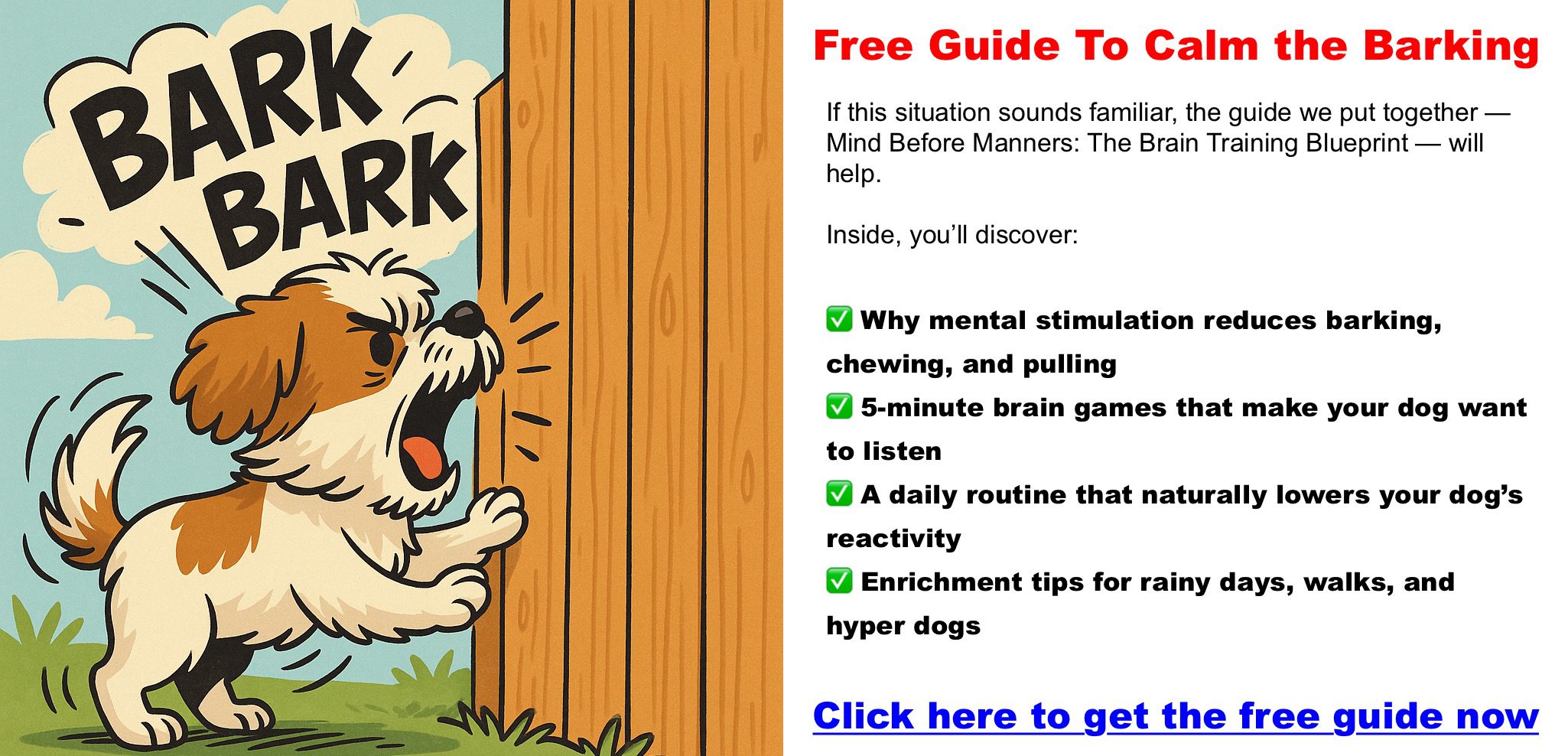Barking Battles at the Fence? Try This Weird Trick That Actually Works
Moving into a new unit was supposed to be peaceful. But instead of backyard bliss, we found ourselves in the middle of a barking battle — our mixed breed dog versus the neighbor’s German Shepard. Every time we let our dog out, they’d race to the fence, barking, scratching, running along the edge like it was their personal war zone. And of course, the neighbor’s dogs would return fire.
It felt like we couldn’t enjoy our own yard without chaos. Sound familiar? Here’s how we fixed it — and how you can too.
Why Dogs Bark at the Fence
This isn’t just “bad behavior.” It’s usually driven by:
- Territorial instinct — your dog thinks he’s protecting his turf.
- Frustration — he sees dogs but can’t reach them, which builds tension.
- Lack of structure — no one’s teaching him how to behave in the moment.
The longer it goes on, the more the habit builds.
Step 1: Immediate Control
Until your dog is trained, don’t let him outside alone. Use a leash or long lead to keep control.
Block the visual trigger. If he sees the other dogs, he’s already amped. Try:
- Bamboo fencing
- Outdoor fabric or reed rolls
- Even tall planters or patio screens
Just removing the sight of the other dogs helps reduce the frenzy.
Step 2: Behavior Training That Works
Start teaching your dog what to do instead of barking.
1. Claim the Fence. Stand between your dog and the fence when he starts barking. Calmly but firmly give a cue like “Leave it.” Then walk him away. Do this every time.
2. Use a Place Command. Teach your pup to stay on a mat or bed, even when other dogs are barking. Reward heavily for staying calm.
3. Counter-Condition with Treats. When your dog notices the other dogs but doesn’t bark — treat. You’re rewiring his brain to associate calm with reward.
4. Practice Impulse Control. Daily sit-stay drills, leash walking, and nosework games all help your dog learn to stay calm under pressure.
Step 3: Set Up the Yard for Success
Can’t modify the fence? Use temporary barriers or place items along the fence to create space. Even a few feet helps.
Time your outings. If you know when the neighbor’s dogs are usually out, try to stagger your dog’s time outside.
Talk to your neighbors. A polite heads-up that you’re training your dog might lead them to keep theirs inside more often.
What Not to Do
- Don’t yell. It sounds like you’re joining the barking.
- Don’t punish. Bark collars or harsh corrections can backfire.
- Don’t ignore it. This behavior won’t go away on its own — it’ll get worse.
You Can Fix This
It’s frustrating, yes. But it’s fixable. With consistent training and a few smart adjustments, your doggie can learn to ignore the chaos and enjoy a peaceful yard.
Free Guide: Calm the Barking, Boost the Bond
If this situation sounds familiar, the guide we put together — Mind Before Manners: The Brain Training Blueprint — will help.
Inside, you’ll discover:
✅ Why mental stimulation reduces barking, chewing, and pulling
✅ 5-minute brain games that make your dog want to listen
✅ A daily routine that naturally lowers your dog’s reactivity
✅ Enrichment tips for rainy days, walks, and hyper dogs
